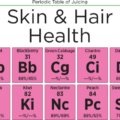Antiaging, Juicing to Manage Your mTOR
Ilene S. Ruhoy, MD, PhD
What if the search for the fountain of youth is found, and the ingredients are in your juice?
What is aging?
Aging is the cumulative process of our body losing the ability to repair itself.
Our physiology is complex. There is no denying the multitude of biochemical reactions every day, every hour, every minute to help our bodies maintain a healthy balance. It integrates the interface between our environment and our internal environment. A constant exchange of exposures and physiologic responses regulates this balance with the bombardment of external and internal stimuli.
Can diet slow or reverse the aging process?
Researchers believe the answer is yes. And it is directly tied to an enzyme in our body that we all should know about, mTOR. mTOR stands for ‘mechanistic target of rapamycin’ and how our body regulates it. It has a significant function, but like angiogenesis, too much of this enzyme may not be good. For example, there are foods to influence the creation of blood vessels, and there are foods that affect mTOR activity. We need both, but we don’t want too much as the excess leads to disease.
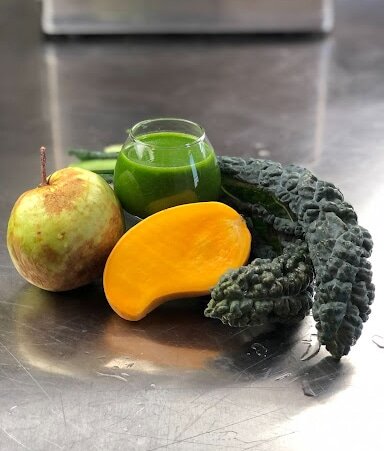
What is mTOR?
Research in the past decade has shown the power mTOR has to assist in healthy aging. Research in the antiaging arena has demonstrated that mTOR has this age-defying capacity due to its ability to prolong life and, significantly, prolong healthy life through its cellular function. mTOR commands, recruits, and facilitates cellular responses, including the processes of migration, signaling, proliferation, and apoptosis (the death of cells that occurs as a regular and controlled part of an organism’s growth or development). It is important to understand that reproduction and proliferation of cells require critical substrates in the forms of macro and micronutrients and a tenuous balance between catabolic (breakdown) and anabolic (buildup) pathways. The mTOR network is vital in advancing these processes by ensuring appropriate substrates, protein synthesis and anabolism, energy production, and protecting regulators of essential protein kinases.
In part, mTOR regulates basic cellular functions, such as oxidative phosphorylation, organelle biogenesis, cellular signaling, autophagy, and protein synthesis. These functions are essential for neuronal synaptic transmission and neurotransmitter synthesis, metabolism, and degradation and thus critical for cognitive ability. As we age, there is an increased incidence and risk of age-related cognitive decline and neurodegenerative disorders, but there is also an increased risk of disturbance in mTOR function. There is an increased disturbance in mTOR signaling as we age due to changes in hormones, growth factors, and the decreased bioavailability of substrates such as glucose and amino acids, necessary for mTOR function.
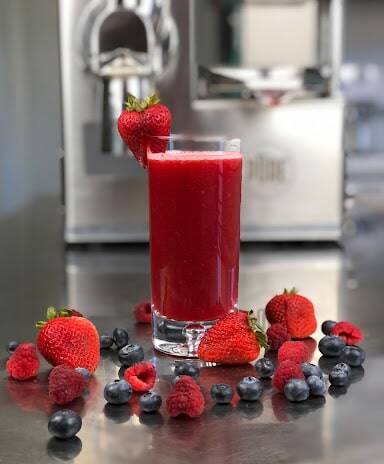
Stimulating the mTOR Response
Facilitating cellular response, one of the critical roles of mTOR, is essential for our healthy development and overall resiliency. However, multiple studies demonstrate the mTOR network may also play a crucial role in the aging continuum of its adverse and paradoxical effects on stem cell migration and differentiation, organismal metabolism, and cellular autophagy. Inhibition of the mTOR complex can help improve cellular function leading to increased longevity and health.
More mTOR is not better,
As we age, cellular machinery increases the risk of dysregulation and disrepair from cumulative environmental exposures, disease effects, and aging. In addition, when developmental growth is completed, growth pathways’ perpetuations contribute to aging as the mTOR network keeps chugging along and may become hyperactivated as a compensatory response. As a result, mTOR can be beneficial but can also cause problems in the form of hyperactivation.
Hyperactivation can lead to hyperfunction, leading to “inflammaging” and age-related diseases. Importantly, mTOR plays a role in neuronal development and neuronal circuitry (the formation and activity of neurons). Therefore, hyperactivation is thought to be perhaps an important component in cognitive decline and the development of neurodegenerative disorders seen in the older-aged population.
Inhibition of mTOR with medications such as rapamycin (and other new drugs) has suggested a reduction in the development of unregulated mTOR function. It has, in fact, improved outcomes for some diseases such as tuberous sclerosis and certain cancerous growths. But these medications do not come without side effects or toxicity, and, for the most part, physicians are hesitant to use these medications for current non-indicated uses.
Historical use of natural compounds in healing
Rapamycin, a compound produced by the soil bacterium, Streptomyces hygroscopicus, was originally discovered in the 1970s and has since been used as a medication for cancers, tuberous sclerosis, cardiovascular and transplant medicine. Studies over time proved the immunosuppressive function of this compound in that it inhibits T-cell function by acting on FK-binding 12 (FKBP12), forming a rapamycin-FKBP12 complex which then binds to an enzyme, mTOR, and inhibits its function. Hence the name “mechanistic target of rapamycin.” The inhibition of the mTOR network activity modifies the immune system function, which has been useful for immunomodulation. Inhibition occurs through multiple mechanisms, including impairments in the mTOR network assembly and function.
Plant-based sources of rapamycin,
There are natural sources of mTOR inhibitors found in several plant foods, most of which can be juiced to optimize the efficacy of natural mTOR inhibition. Compounds with natural mTOR inhibiting qualities include flavonoids, urolithin A, genistein, caffeine, curcumin, diindolylmethane, EGCG, and resveratrol.
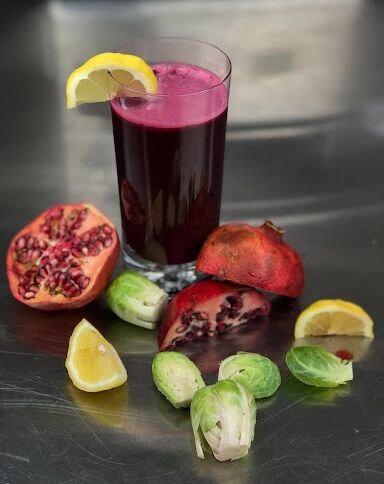
Notably, satiety naturally inhibits mTOR function, so be sure to consume foods that nourish you – that give you what your body needs, so it does not ask for more too soon or too often.
For brain and immune health and overall anti-aging, I recommend focusing on the following juice ingredients along with a healthy lifestyle of regular exercise and good sleep:
Turmeric
Grapes
Broccoli
Broccolini
Cucumber (especially the skins)
Onions
Strawberries
Blueberries
Mangoes
Guava
Raspberries
Pomegranates
Parsley
Green Tea
Juice recipes for anti-aging and mTOR inhibition:
Memory Booster: Broccoli, turmeric, cucumber
Memory Booster
1 Cup Broccoli
2 Cucumbers
3” Turmeric
Makes 30 oz of juice.
The Memory Booster is refreshingly light and delicate. One might expect it to be strong or pungent with broccoli as an ingredient, but it has a light peppery hint of broccoli with just a hint of sweetness. By juicing the broccoli stalk, it’s even sweeter!
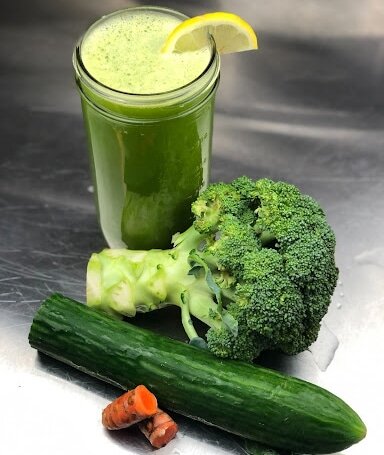
Sharp as a Tack: Strawberries, blueberries, raspberries
Sharp As A Tack
16 oz ( 3 Cups) Strawberries
12 oz (1.5 Cups) Blueberries
6 oz (1 Cup) Red Raspberries
Makes 12 oz of juice.
The Sharp As A Tack has a great combination of sweet juicy strawberry flavor with tart raspberry – blueberry zing! Flavors of summer for sure. This berry forward juice would be delicious drizzled over banana-mango nice cream!

Tropical Getaway: Mangoes, guavas, kale
Tropical Getaway
2 Cups Mangoes
1 Guava
1 Cup Kale (4 Leaves)
Makes 8 oz of juice.
The Tropical Getaway juice has an intoxicating tropical aroma from the marriage of guava and mango. The juice drenches your taste buds with rich mango and floral guava flavors! If you were given this juice while blindfolded, you’d never know this juice has kale in it. It has all the goodness of kale juice enveloped in tropical fruit goodness! Press the Tropical Getaway slowly in the PURE press bag for best results.
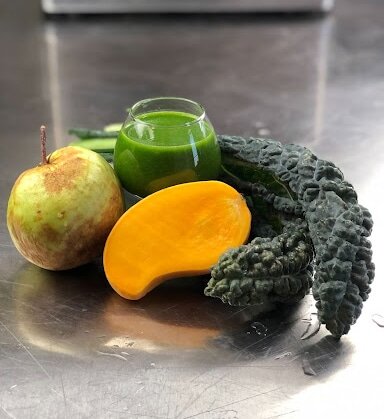
I Dare You: Grapes, parsley, apple, onions
I Dare You
2 Cups Green Grapes
1 Bundle Parsley
2 Green Apples
1/4 Sweet White Onion
Makes 22 oz of juice.
I Dare You pairs up the sweetness of green apples and green grapes to serve as a vector to deliver the nutritional benefits of onion and parsley! Onion in a juice? Don’t knock it ‘til you try it! Very subtle savory notes of the onion play nicely with the herbal minerality of the parsley and fruity sweetness of the grapes and apples. I dare you to try it!
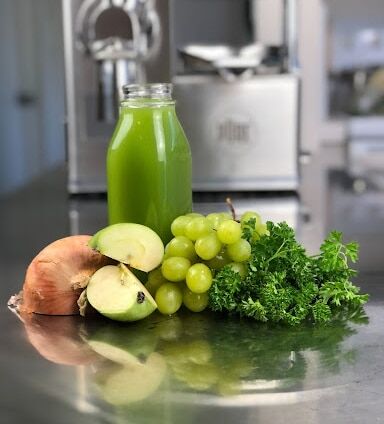
West meets East: Brussel sprouts, pomegranates, lemon
West Meets East
1 Cup Brussels Sprouts
4 Pomegranates
1/2 Lemon
Makes 18 oz of juice.
The West Meets East recipe queues up the nutritional powerhouses of brussels sprouts and pomegranates to make an incredibly delicious juice! The rich, silky pomegranate juice carries the light brassica flavors of the Brussels sprouts very nicely. A bit of citrus tartness from the lemon balances the duo of fruity and savory for a well-rounded juice. This juice would be amazing for brunch!
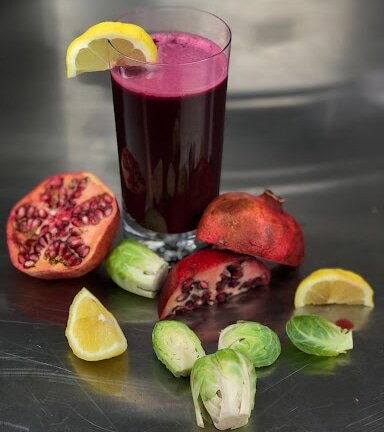
The etiology of the decreased bioavailability of substrates is likely multifactorial. While a lifestyle that includes regular juicing can enhance the supply of substrates as we age, there are other reasons why mTOR signaling becomes less efficient and more dysfunctional throughout our decades of life. Juicing fruits and vegetables with natural mTOR inhibitor compounds can help slow down the sluggishness of mTOR, optimize cellular bioenergetics, and may slow down the ‘inflammaging” process and minimize the risk of age-related cognitive decline.
References
Definition of apoptosis: https://languages.oup.com/google-dictionary-en/
Weichhart T. mTOR as Regulator of Lifespan, Aging, and Cellular Senescence: A Mini-Review. Gerontology. 2018;64(2):127-134. doi: 10.1159/000484629. Epub 2017 Dec 1.
Saxton RA, Sabatini DM. mTOR Signaling in Growth, Metabolism, and Disease.
Cell. 2017 Mar 9;168(6):960-976.
Papadopoli D, Boulay K, Kazak L, Pollak M, Mallette F, Topisirovic I, Hulea L. mTOR as a central regulator of lifespan and aging. F1000Res. 2019 Jul 2;8:F1000 Faculty Rev-998. doi: 10.12688/f1000research.17196.1. eCollection 2019.
Stallone G, Infante B, Prisciandaro C, Grandaliano G. mTOR and Aging: An Old Fashioned Dress. Int J Mol Sci. 2019 Jun 6;20(11):2774.
Lamming DW, Ye L, Sabatini DM, Baur JA. Rapalogs and mTOR inhibitors as anti-aging therapeutics. J Clin Invest. 2013 Mar;123(3):980-9.
Ilha J, do Espírito-Santo CC, de Freitas GR.. mTOR Signaling Pathway and Protein Synthesis: From Training to Aging and Muscle Autophagy. Adv Exp Med Biol. 2018;1088:139-151.
Perluigi M, Di Domenico F, Butterfield DA. mTOR signaling in aging and neurodegeneration: At the crossroad between metabolism dysfunction and impairment of autophagy. Neurobiol Dis. 2015 Dec;84:39-49.
Liu GY, Sabatini DM. mTOR at the nexus of nutrition, growth, ageing and disease. Nat Rev Mol Cell Biol. 2020 Apr;21(4):183-203.
Van Skike CE, Lin AL, Roberts Burbank R, Halloran JJ, Hernandez SF, Cuvillier J, Soto VY, Hussong SA, Jahrling JB, Javors MA, Hart MJ, Fischer KE, Austad SN, Galvan V. mTOR drives cerebrovascular, synaptic, and cognitive dysfunction in normative aging. Aging Cell. 2020 Jan;19(1):e13057
Hardeland R. Aging, Melatonin, and the Pro- and Anti-Inflammatory Networks.
Int J Mol Sci. 2019 Mar 11;20(5):1223.
Dudley W Lamming, Lan Ye, David M Sabatini, Joseph A Baur. Rapalogs and mTOR inhibitors as anti-aging therapeutics. J Clin Inves. 2013 Mar;123(3):980-9.
Blanka Klimova , Michal Novotny , Kamil Kuca . Anti-Aging Drugs – Prospect of Longer Life?. Curr Med Chem. 2018;25(17):1946-1953.
Mikhail V Blagosklonny. From rapalogs to anti-aging formula. Oncotarget. 2017 May 30;8(22):35492-35507.
Rubinsztein DC, Mariño G, Kroemer G. Autophagy and aging. Cell. 2011 Sep 2;146(5):682-95
Zhao P, Sui BD, Liu N, Lv YJ, Zheng CX, Lu YB, Huang WT, Zhou CH, Chen J, Pang DL, Fei DD, Xuan K, Hu CH, Jin Y. Anti-aging pharmacology in cutaneous wound healing: effects of metformin, resveratrol, and rapamycin by local application. Aging Cell. 2017 Oct;16(5):1083-1093.
Dai Q, Zhou D, Xu L, Song X. Curcumin alleviates rheumatoid arthritis-induced inflammation and synovial hyperplasia by targeting mTOR pathway in rats. Drug Des Devel Ther. 2018 Dec 3;12:4095-4105.
Liu R, Zhang HB, Yang J, Wang JR, Liu JX, Li CL. Curcumin alleviates isoproterenol-induced cardiac hypertrophy and fibrosis through inhibition of autophagy and activation of mTOR. Eur Rev Med Pharmacol Sci. 2018 Nov;22(21):7500-7508.
Christopher S. Beevers, Hongyu Zhou, Shile Huang. Hitting the Golden TORget: Curcumin’s Effects on mTOR Signaling Anticancer Agents Med Chem. 2013 Sep; 13(7): 988–994.
Banerjee S, Kong D, Wang Z, Bao B, Hillman GG, Sarkar FH. Attenuation of multi-targeted proliferation-linked signaling by 3,3′-diindolylmethane (DIM): from bench to clinic. Mutat Res. 2011 Jul-Oct;728(1-2):47-66.
Chu Q, Yu X, Jia R, Wang Y, Zhang Y, Zhang S, Liu Y, Li Y, Chen W, Ye X, Zheng X.Oxid. Flavonoids from Apios americana Medikus Leaves Protect RAW264.7 Cells against Inflammation via Inhibition of MAPKs, Akt-mTOR Pathways, and Nfr2 Activation.
Med Cell Longev. 2019 Dec 13;2019:1563024.



